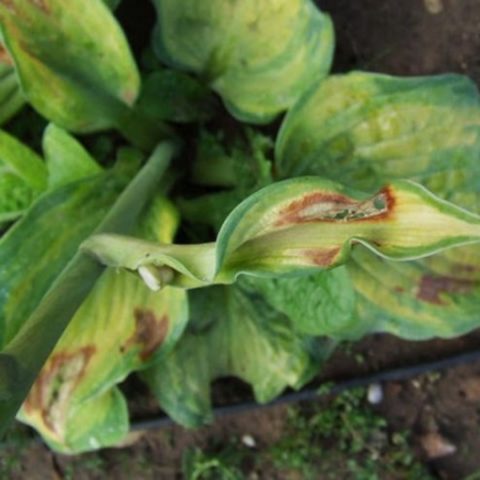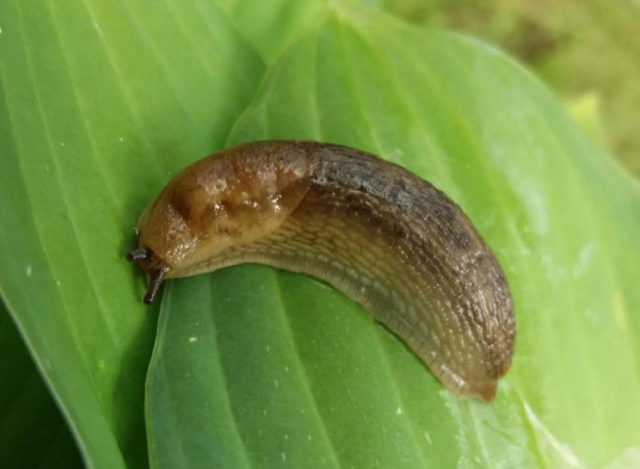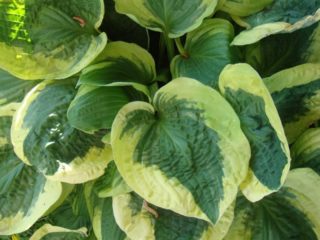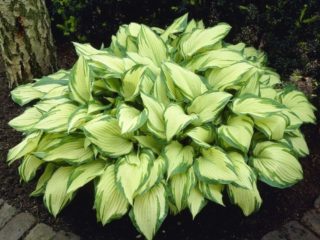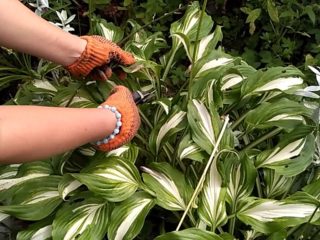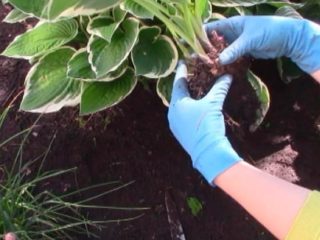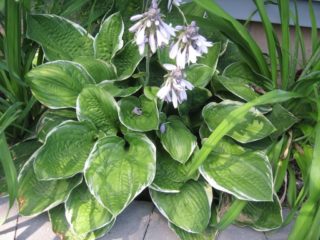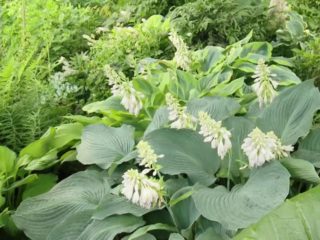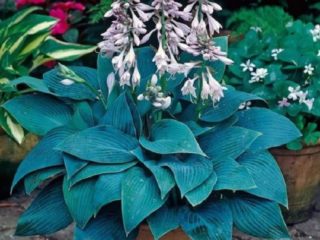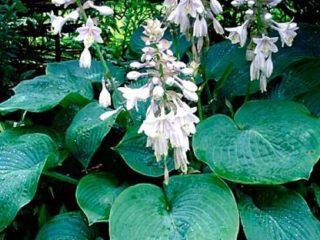Content
Hosta Patriot is a perennial herbaceous crop valued for its high decorative qualities. At the same time, the plant retains its attractive appearance throughout the entire season. This hybrid form is distinguished by a contrasting shade of leaves, so it stands out noticeably against the background of other species. But to achieve maximum decorativeness, it is necessary to follow some rules of agricultural technology.
Description of Patriot hosts
This hosta is characterized by a dome-shaped spreading bush (clump). The plant has basal, petiolate leaves that fall down and form a rosette 70 cm high and up to 100 cm in diameter. Wide oval-heart-shaped plates with a corrugated surface. The leaves are 13 cm long and about 9 cm wide.
Hybrid hosta "Patriot" belongs to the variegated category. The main color of its leaves is dark green, but there is a wide white border along the edges of the plates. The root system of the plant consists of thickened branched and fibrous-cord-like processes.
The flowering period occurs in mid-July or early August. At this time, the plant forms strong flower stalks up to 1 m high, which confidently rise above the leaves.The flowers of “Patriot” are fragrant, funnel-shaped, large, about 6 cm in diameter. They often grow one-sided, collected in racemose inflorescences. The shade of the petals is soft lavender.
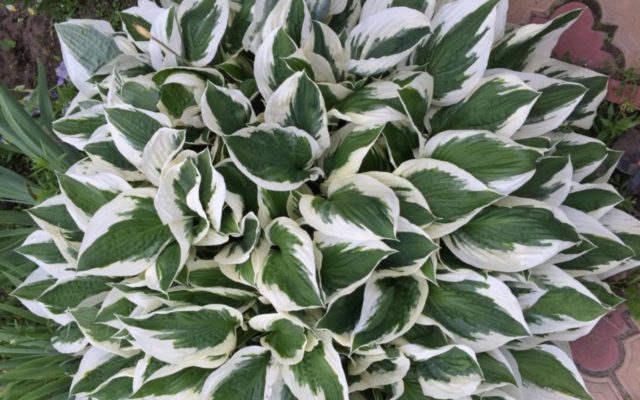
"Patriot" is recommended to be grown in partial shade
This hosta is characterized by great growth vigor. A spreading bush is formed after three years.
This species has a high level of frost resistance. The plant does not suffer from low temperatures down to -34 degrees. Therefore, it is suitable for cultivation in the central and northern regions of the country.
Application in landscape design
Hosta "Patriot" looks great in single or group plantings, as well as when creating large compositions. Its tall bush can act as a tapeworm against the background of a green lawn and in combination with conifers. It can also be planted along the edges of ponds, garden paths, near fountains and statues.
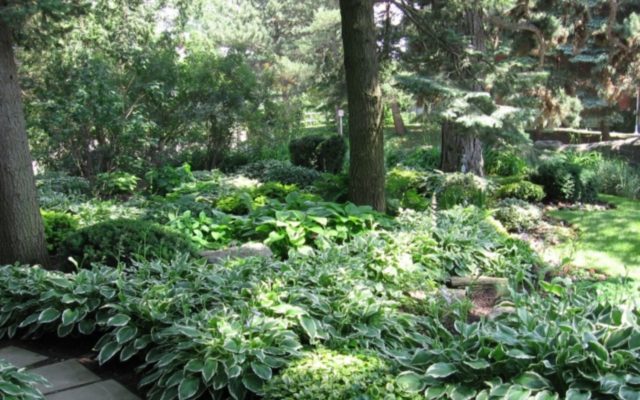
Hosta is intended for decorating personal plots
When combined with other types of crops, it is necessary to select varieties with the same bush height and flowering period. When creating a multi-level flower bed, “Patriot” can be an excellent background for low-growing varieties of blue and green colors.
To highlight the beauty of the leaves of this perennial, it is necessary to select companions with other shades. In this case, Heuchera and Horny Goat weed are excellent.
If it is necessary to create a vertical accent, then the Patriot host is recommended to be grown with tall phlox, daylilies and foxgloves. Its beauty will be emphasized by combination with plants with both small leaves - budra, lysimachia, periwinkle, and carved ones - ferns, anemones, astilbe, peonies.This perennial also looks great in a composition with cereals: miscanthus, reed grass, molinia.
In combination with roses in one flowerbed, the hosta “Patriot” can beautifully camouflage the bare branches below.
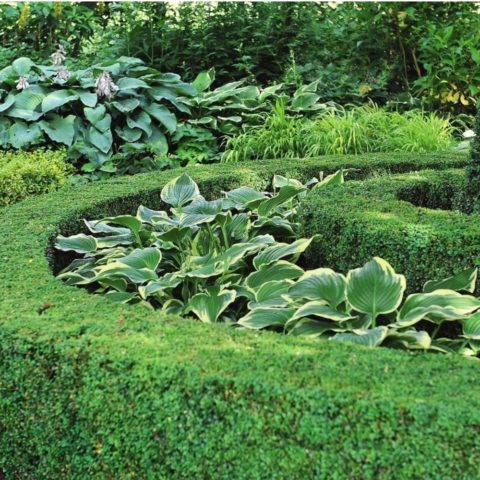
An original solution could be a “multi-layer” border
Reproduction methods
You can obtain young seedlings of Hosta “Patriot” by seeds, cuttings and dividing the bush. With the first method, sowing should be done directly into the ground in June. The seed method allows you to obtain full-fledged Patriot hosta bushes in the fifth year.
The second method involves propagation by leaf cuttings. To do this, they use young hosta shoots, tearing them off at the “heel”. Rooting should be carried out in a moist substrate. The favorable period for cuttings from “Patriot” is May-June.
The third method is the simplest and most accessible. It is recommended to divide the bush in the spring, when new shoots appear, or in early autumn. The mother liquor should be divided into several parts, each of which should have a growth point and a well-developed root shoot. Therefore, seedlings quickly take root in a new place and grow.
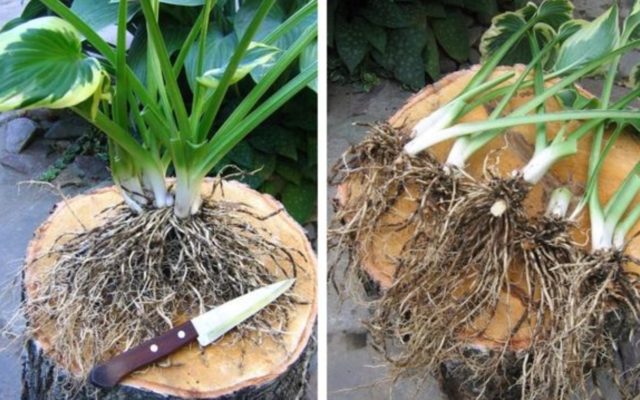
The bush can be divided once every 4 years.
Planting algorithm for Hosta Patriot
This perennial is a long-liver and can grow in one place for 20 or more years. It is recommended to grow Hosta “Patriot” in partial shade, since under direct sunlight burns form on the leaves of the plant, and in deep shade the decorative properties of the plant are lost. The optimal time for planting is the first half of May or the end of August-beginning of September.
Hosta prefers to grow on loam with low acidity. It is also possible to grow in clay soil, but then lay a 10 cm thick drainage layer in the hole.
The planting area should be dug up within 2 weeks. Then prepare planting holes 50 cm deep and wide. Fill each hole with a nutrient mixture of turf, humus, leaf soil and peat in a ratio of 2:1:1:1. Plants must be placed at a distance of 70 cm from each other.
Hosta "Patriot" seedlings should also be prepared before planting. To do this, you need to inspect the roots and remove all damaged and rotten areas.
Landing algorithm:
- You need to make a small mound in the center of the pit.
- Place a seedling on it and straighten the roots of the plant.
- Cover them with soil so that the root collar is flush with the soil surface.
- Compact the soil at the base.
- Water generously.
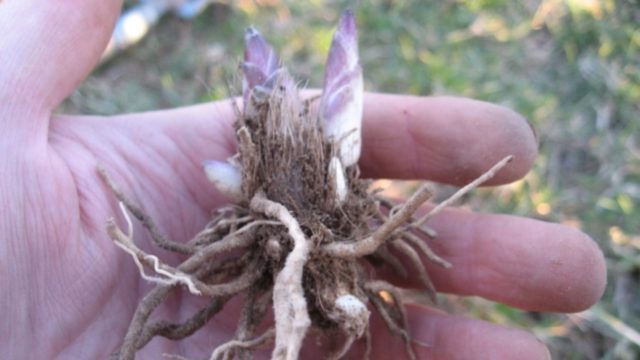
Sandy soil is not suitable for growing Hosta "Patriot"
Growing rules
Hosta "Patriot" is an unpretentious perennial, but to obtain maximum decorative value it is necessary to follow some rules.
This hosta belongs to the category of moisture-loving crops. Therefore, it needs to be provided with regular watering, in the absence of rain - 2 times a week. After each moistening, the soil at the base should be loosened so that air can freely penetrate to the roots. During hot periods, a 3 cm thick layer of mulch should be laid on the soil surface.
Seedlings should be fed from the third year if humus was added to the soil during planting. In the spring, at the beginning of the growing season, the plant should be fertilized with organic matter twice at intervals of 2-3 weeks.Chicken manure 1:15 or mullein 1:10 is suitable for this. If unavailable, you can use mineral fertilizers with a high nitrogen content: urea, ammonium nitrate at the rate of 30 g per 1 bucket of water.
In June and July, wood ash should be poured under the Patriot hosta bush and incorporated into the substrate. This will enhance the variegation of the plant. If necessary, it can be replaced by adding superphosphate (40 g) and potassium sulphide (30 g) to a bucket of water.
Preparing for winter
Hosta "Fortune Patriot" does not need intensive preparation for winter, but some activities still need to be carried out. They must be started after flowering. During this period, the flower stalks at the base should be completely removed so that the plant does not expend energy on forming seeds.
In the fall, when the hosta leaves turn yellow, the above-ground parts should be pruned. It is also recommended during this period to mulch the soil at the base with humus or peat so that the root system does not freeze. The top should be covered with spruce branches, brushwood or branches. This will help retain snow and protect the plant during severe frosts.
Diseases and pests
Hosta "Patriot" has high natural immunity. But if the growing conditions are inappropriate, it weakens significantly.
Possible problems:
- Phyllosticosis. The disease manifests itself as rusty-brown spots on the leaves, which leads to loss of decorativeness. In this case, it is recommended to remove the affected parts of the plant and treat the bush with the fungicide “Fitosporin-M”, “Skor”.
- Slugs. These pests feed on hosta leaves. A sign of their vital activity are large holes on the leaf plates.To repel slugs, it is necessary to pour broken shell shells, wood ash or sharp crushed stone at the base of the bush. In case of mass damage, place trap containers filled with beer next to the plant.
Conclusion
Hosta Patriot is a hybrid form of culture that amazes with the beauty of its leaves. And the unpretentiousness of this perennial only contributes to the growth of its popularity among gardeners. With the help of "Patriot" you can make bright accents in the garden and add volume to even a small area. At the same time, the plant remains decorative throughout the season, without requiring special care.
